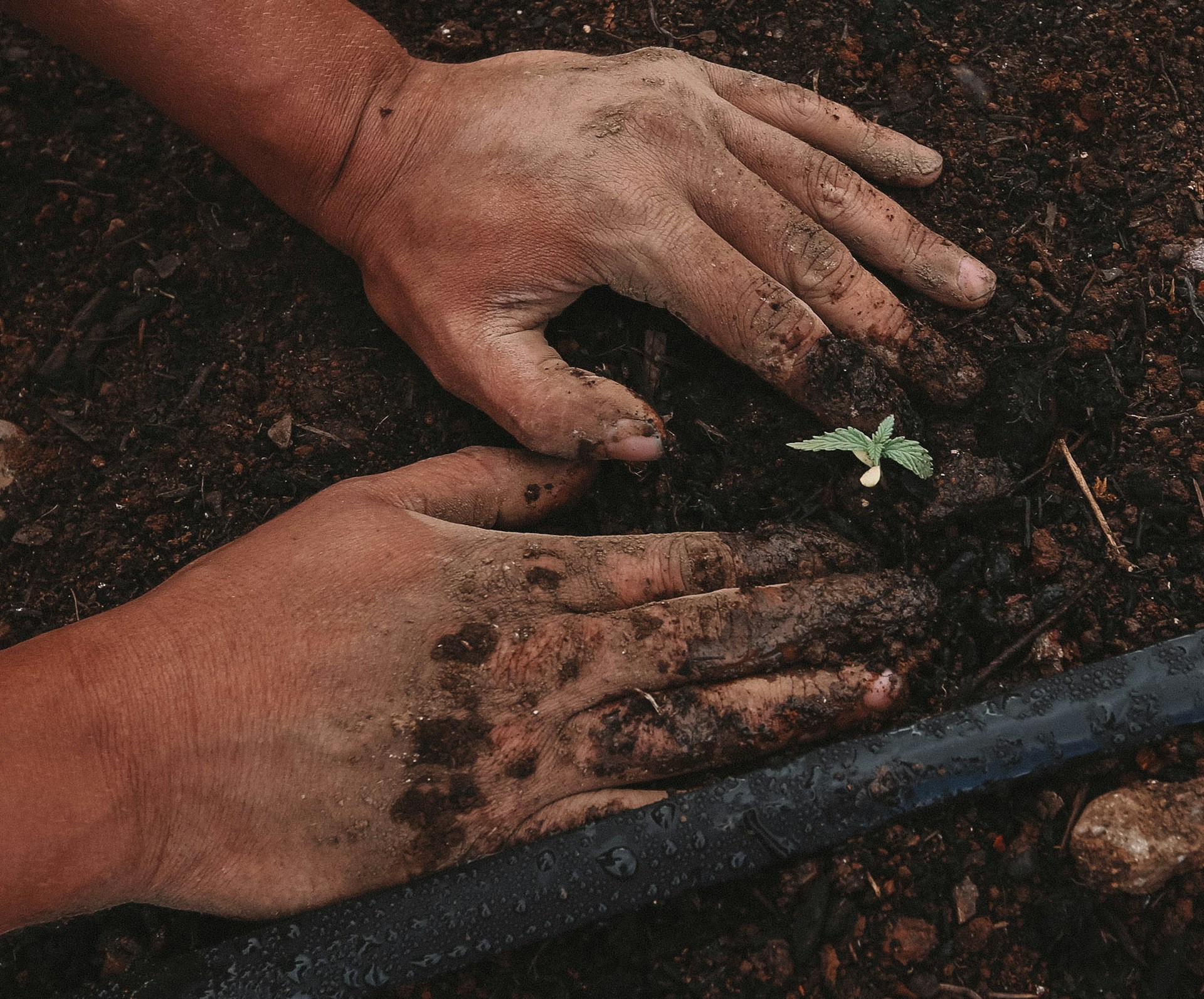Let’s travel back to the early 90’s, where a North Dakota farmer named Gabe Brown was on the verge of bankruptcy.
Years of drought, pest infestations, and soil degradation had taken their toll on his land. Out of desperation, Gabe tried something radical—he adopted regenerative agriculture practices. Abandoning conventional farming tactics like tilling and chemical fertilizers, he focused instead on restoring soil health through crop rotation, cover crops, and composting.
The result? Gabe’s land bounced back. Yields soared, and his farm became more productive than ever before. Today, 20 years later, Brown has crop yields 20-25 percent higher than the average yields in his county.
The really exciting part: regenerative agriculture doesn’t just produce more food—it also sequesters carbon in the soil. If we want to stop climate change we need to address the fact that, according to the UN, our food system is responsible for more than 34% of global greenhouse gas emissions.
Every meal you eat has an impact on the planet. That’s why the future of agriculture is about much more than simply improving yields or reducing emissions—it’s about revolutionizing the way we feed the world.
Gabe’s North Dakota farm is now a model for farmers worldwide, and major food producers are following suit. General Mills has committed to advancing regenerative agriculture on 1 million acres of farmland by 2030. They understand that this isn’t just about sustainability, it’s about ensuring the future of food—and they’re leveraging their resources to support farmers willing to transition from conventional to regenerative practices
One of the most critical environmental challenges in agriculture is the use of synthetic fertilizers.
Modern agriculture uses nitrogen fertilizer to boost crop yields, but there’s a huge downside. It’s responsible for releasing vast amounts of nitrous oxide, a greenhouse gas that’s 300 times more potent than carbon dioxide. Not to mention, fertilizer often finds its way into water systems when it leaches beneath topsoil or runs directly off into canals and rivers. When it finds its way into lakes or the ocean, nitrogen boosts algae production which sucks all the oxygen from the water, creating dead zones.
Enter Pivot Bio, a company that’s revolutionizing how we fertilize crops by using nature’s own processes. By harnessing naturally occurring microbes, Pivot Bio’s technology delivers nitrogen directly to the roots of the plants, exactly when and where it’s needed. This makes the process not only more sustainable but also more cost-effective. In fact, the company’s product, PROVEN 40, is designed to replace a significant portion (up to 25%) of the synthetic nitrogen fertilizer typically used on corn crops. That’s a massive reduction in chemical fertilizer use which means fewer emissions, less pollution, and healthier ecosystems without reducing farm yields.
Reducing fertilizer dependency has the potential to transform global agriculture. Nitrogen fertilizers have long been a cornerstone of industrial farming, but their environmental impact is devastating. By replacing them with a biological solution, Pivot Bio is helping farmers grow food more sustainably while also cutting their input costs.
One thing I’ve learned in agriculture is that sometimes the best innovations come from looking at how nature solves problems. And one thing I’ve learned about nature is that it inspires innovative solutions well beyond the scope of agriculture.




